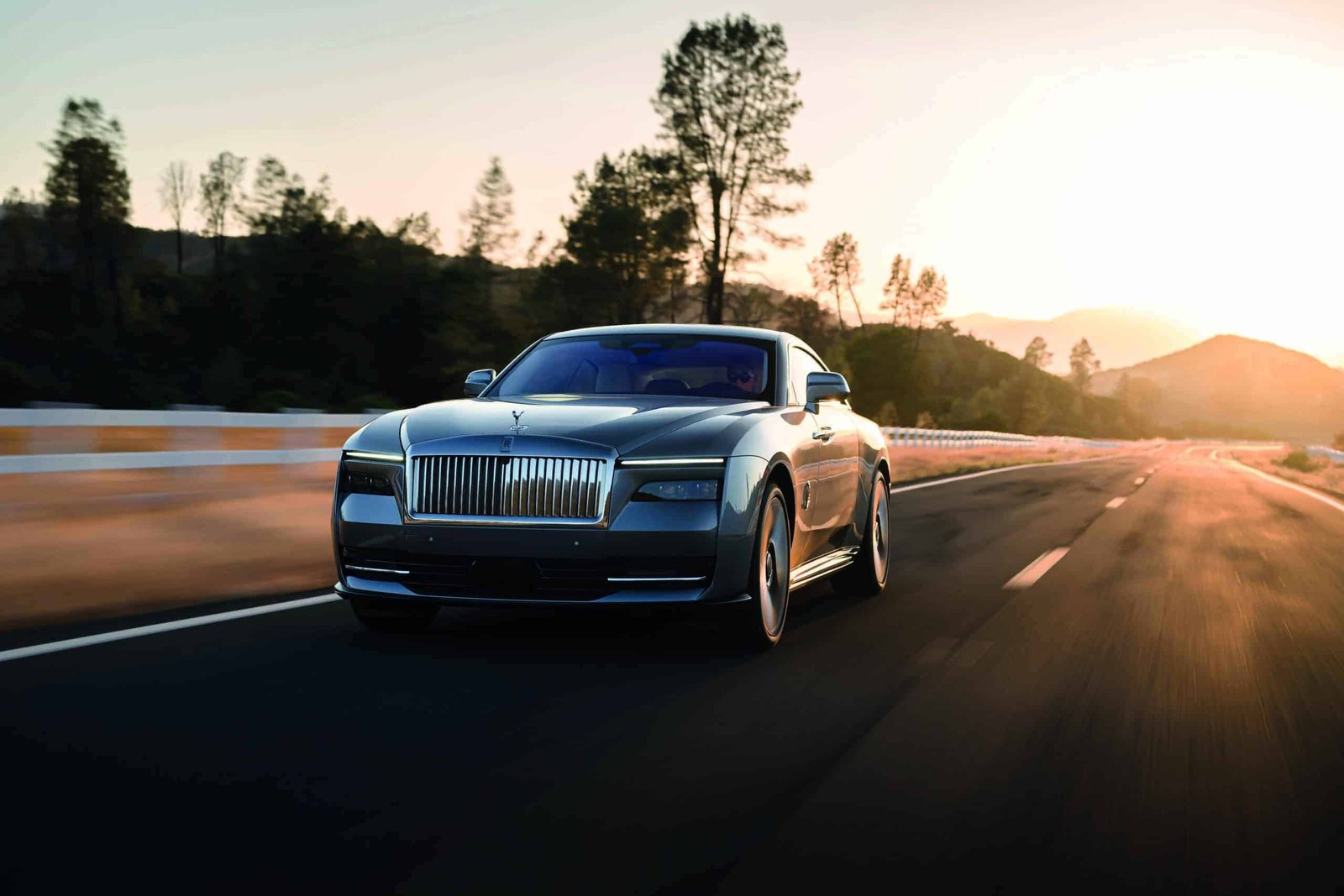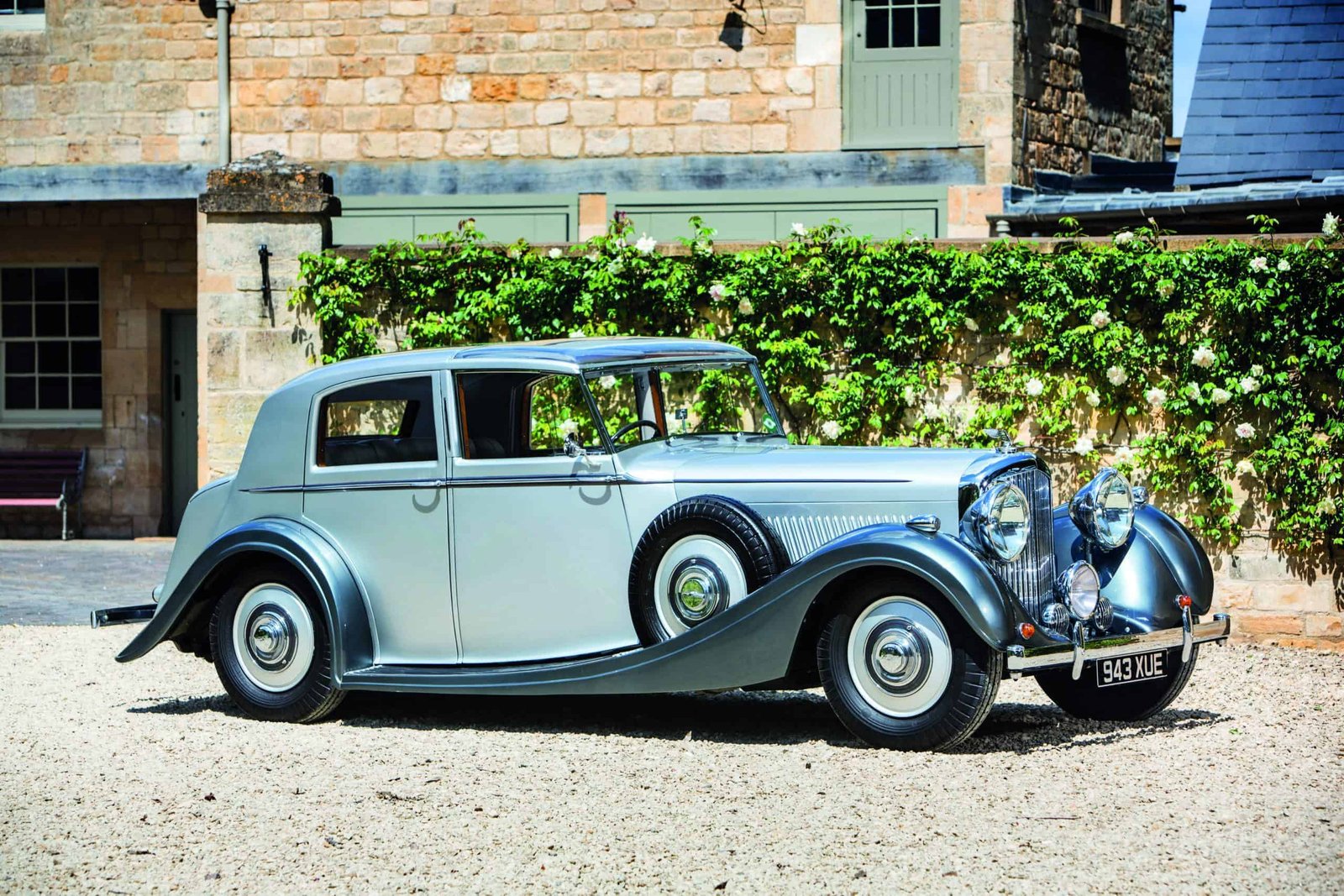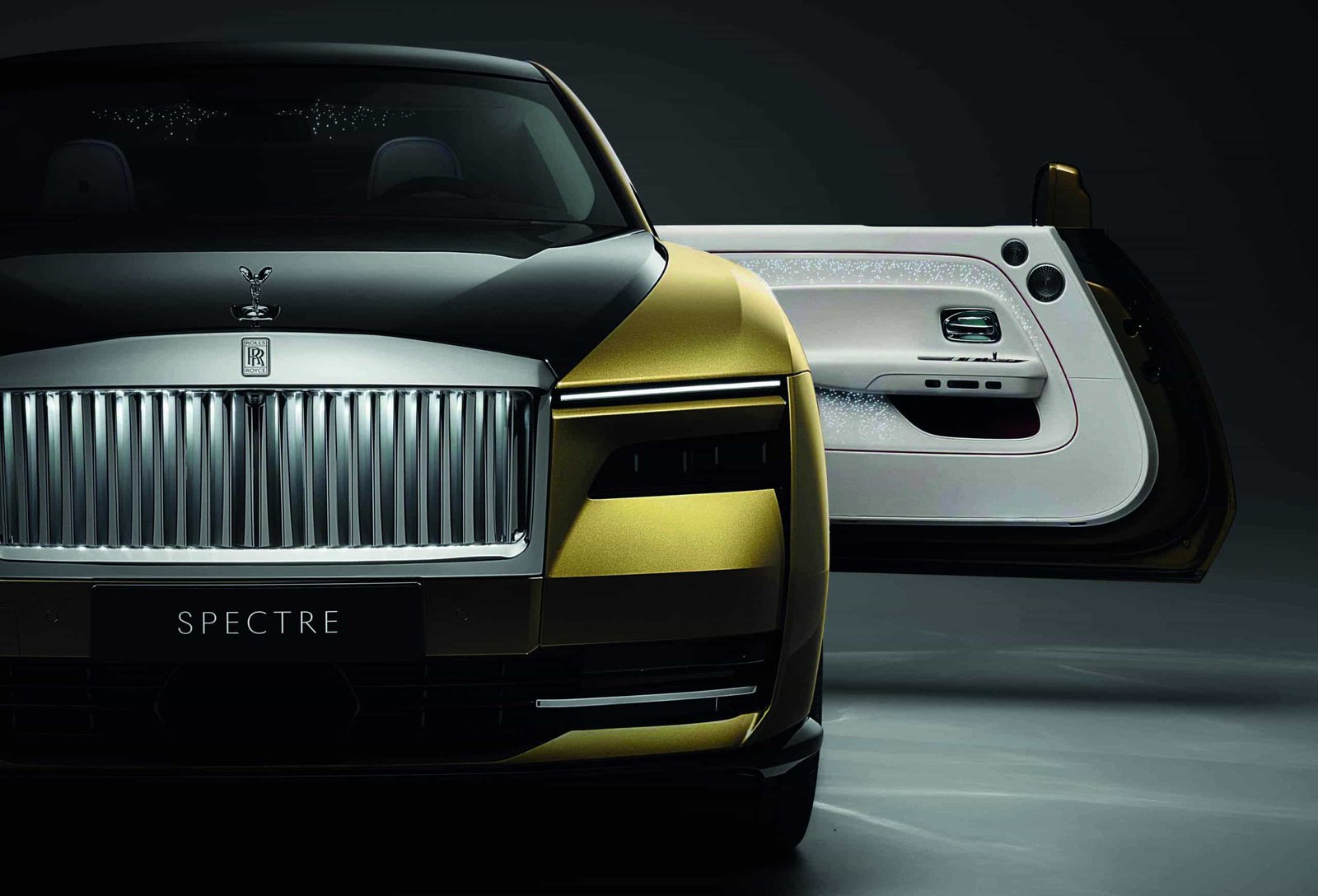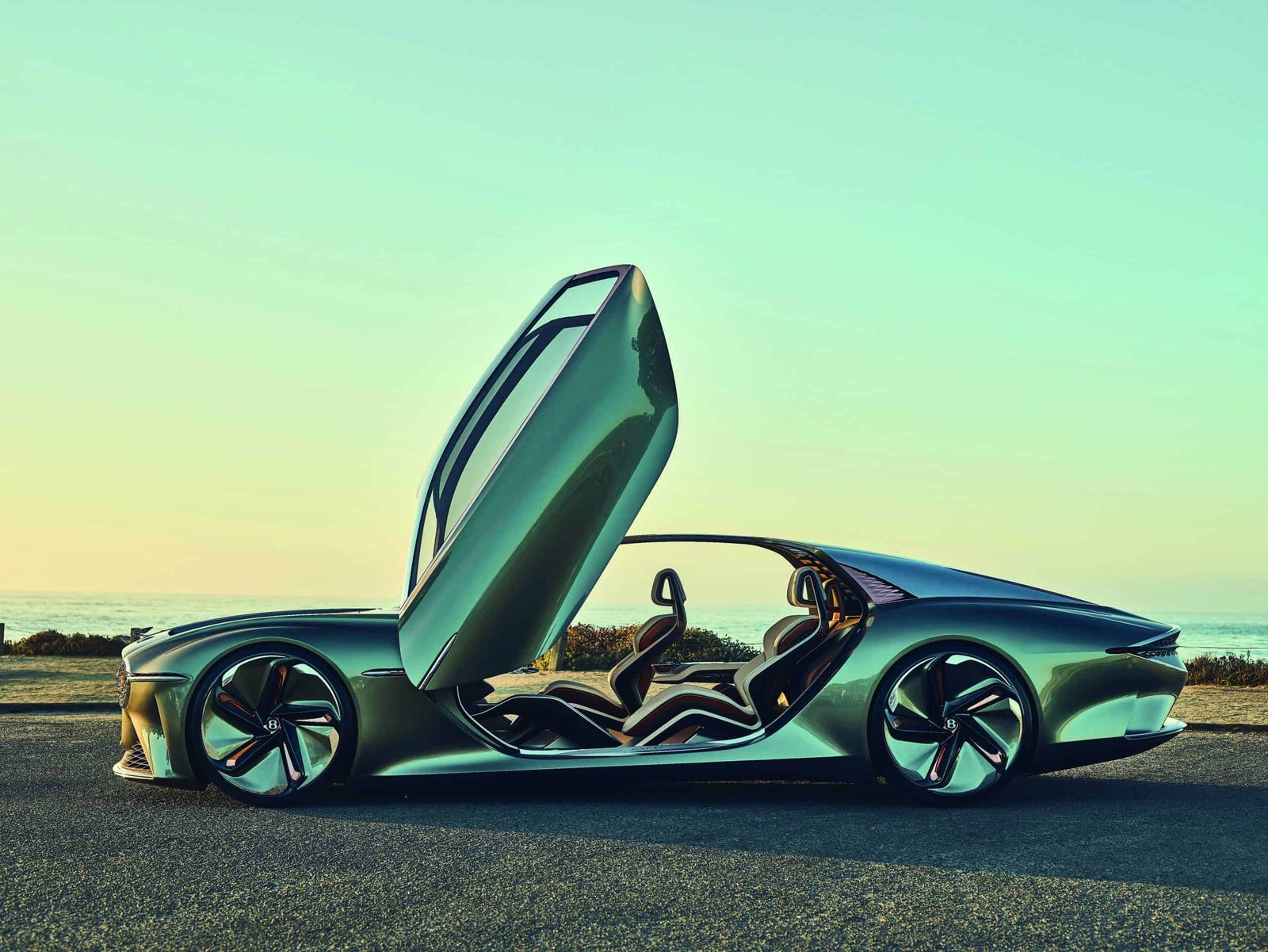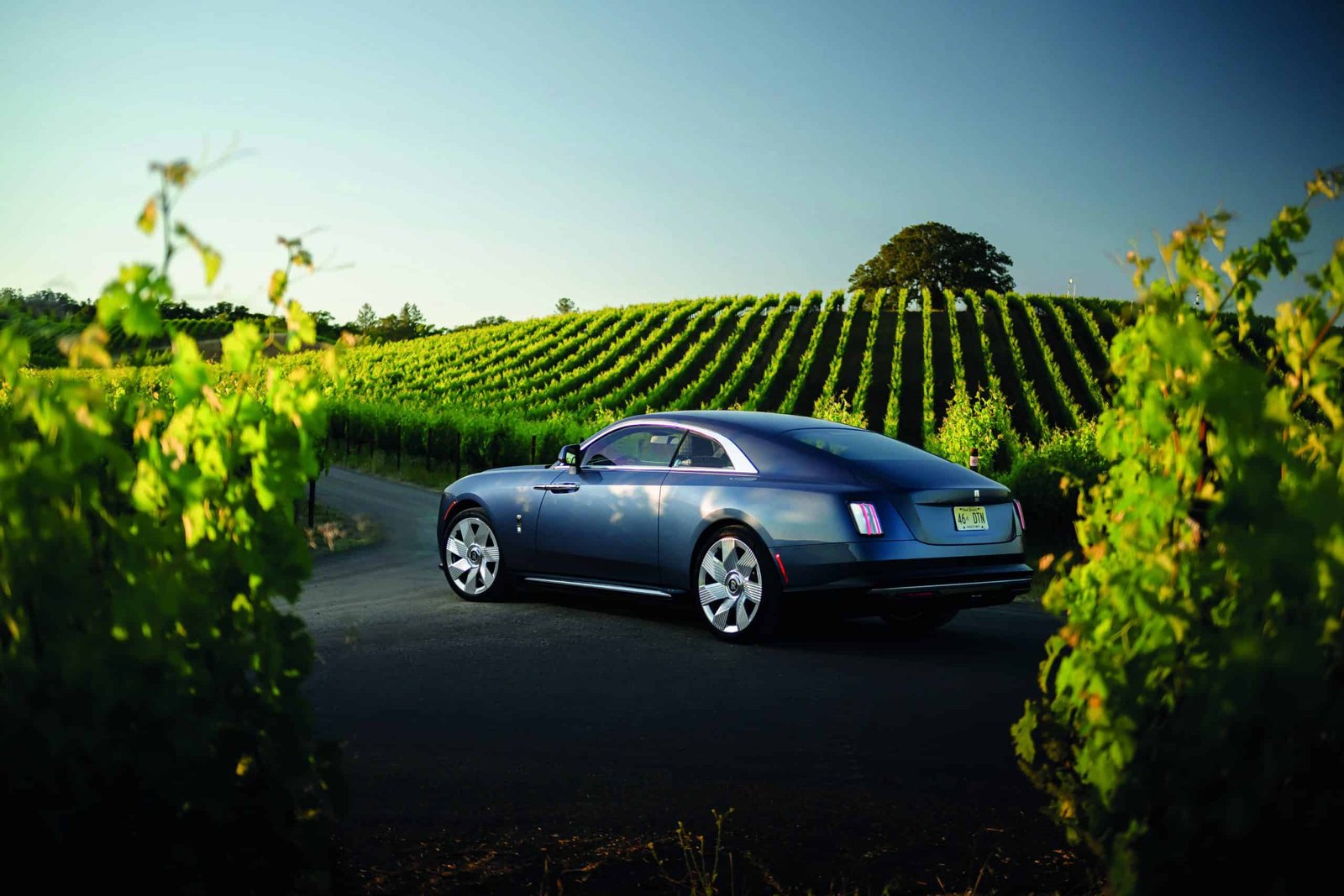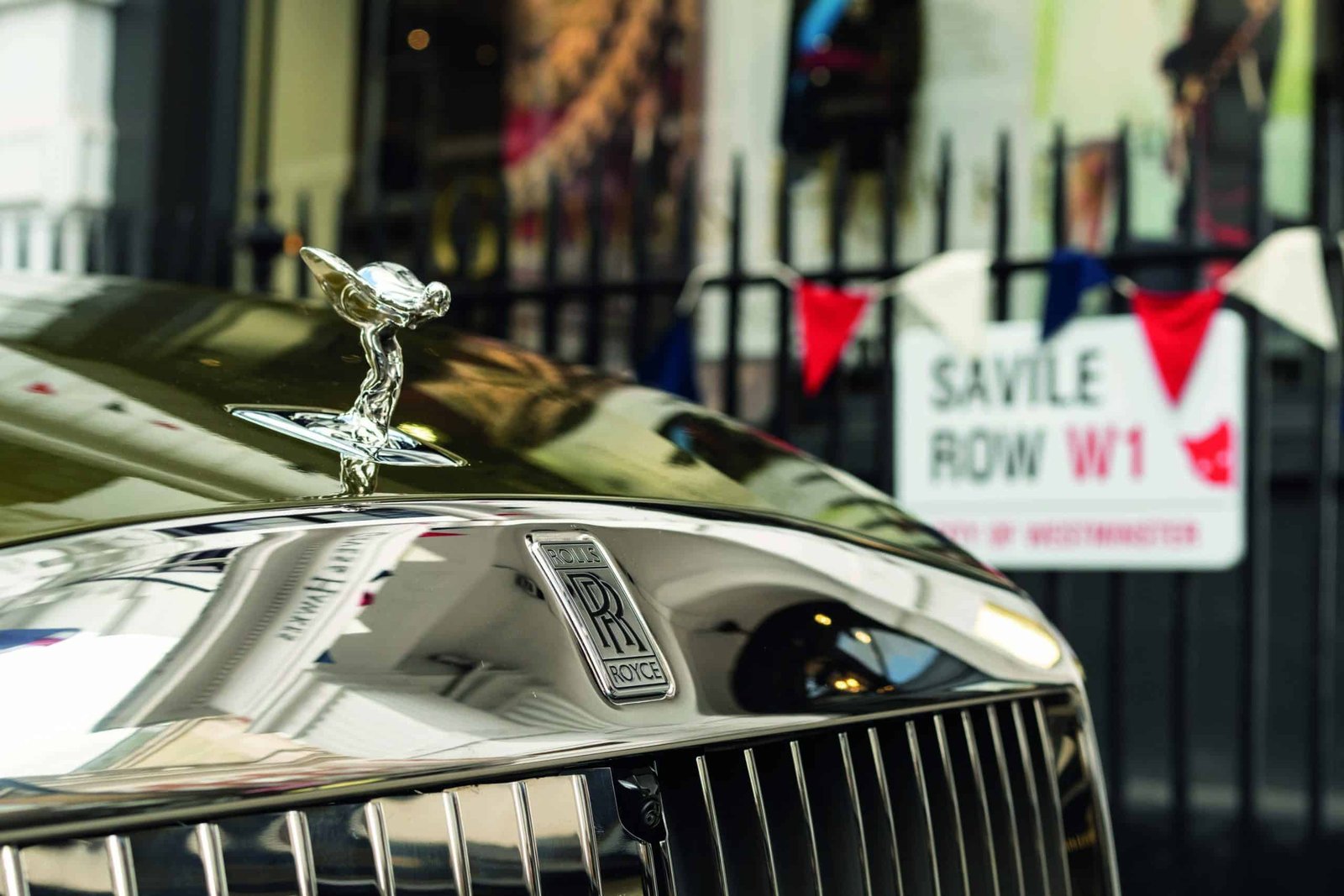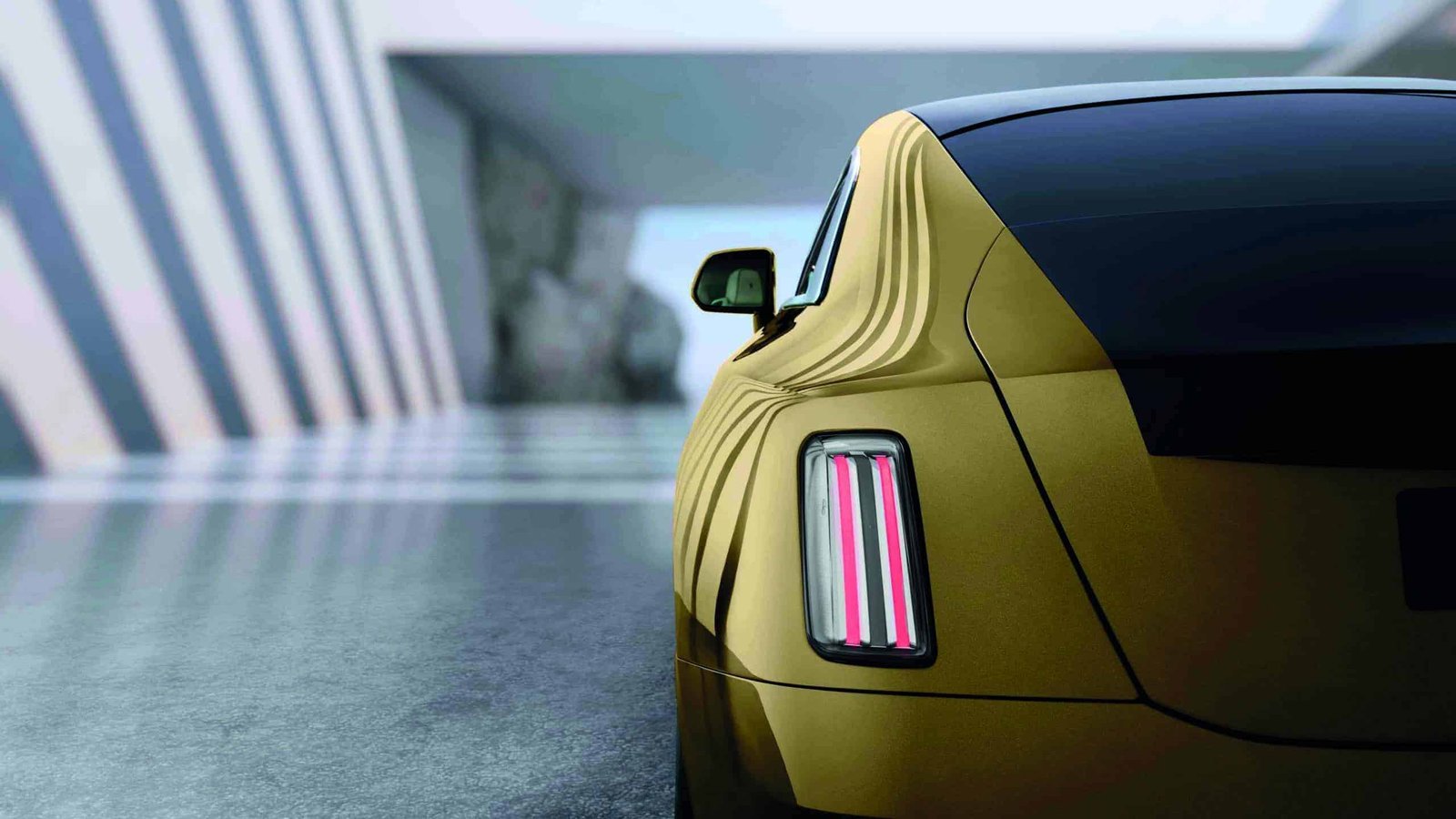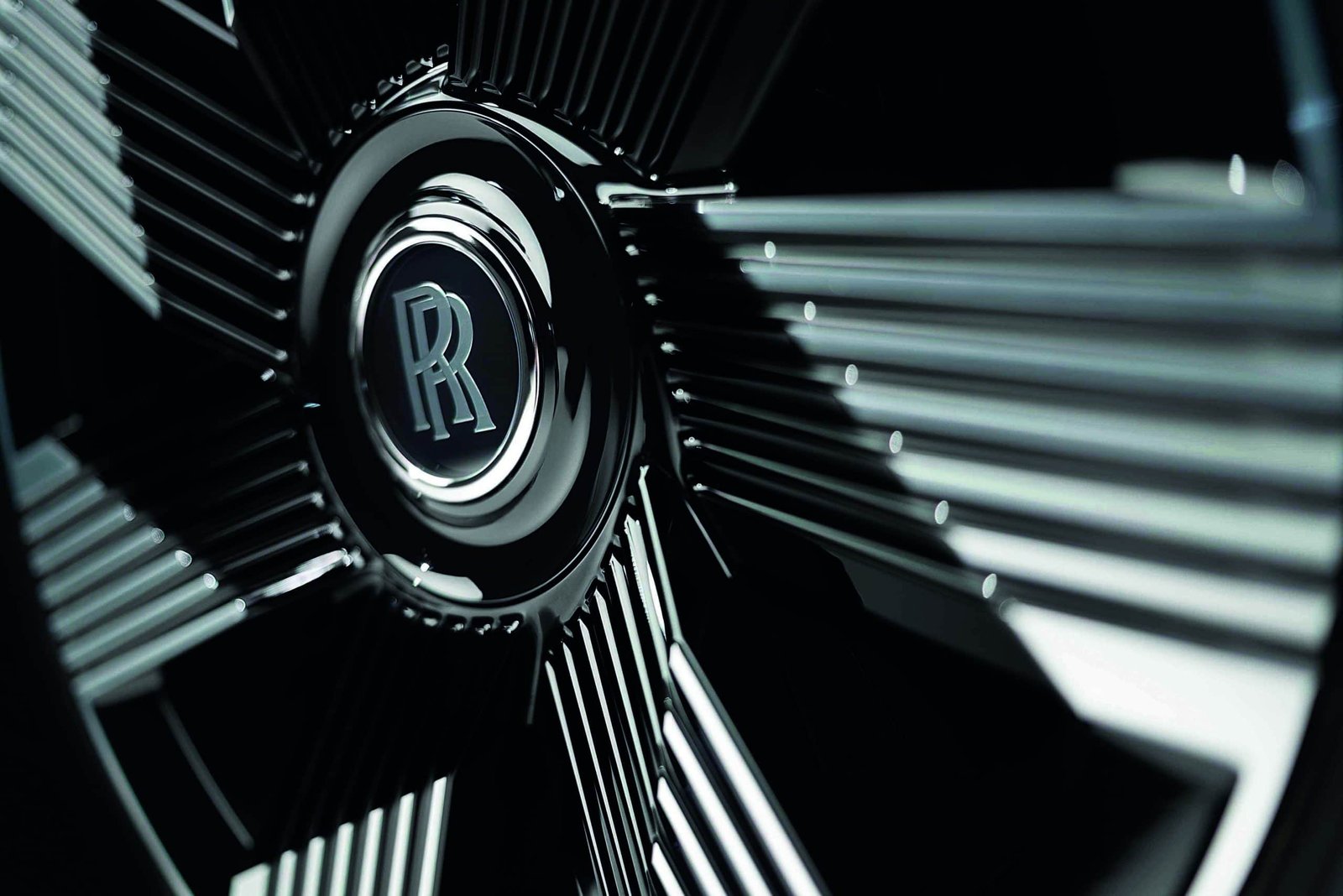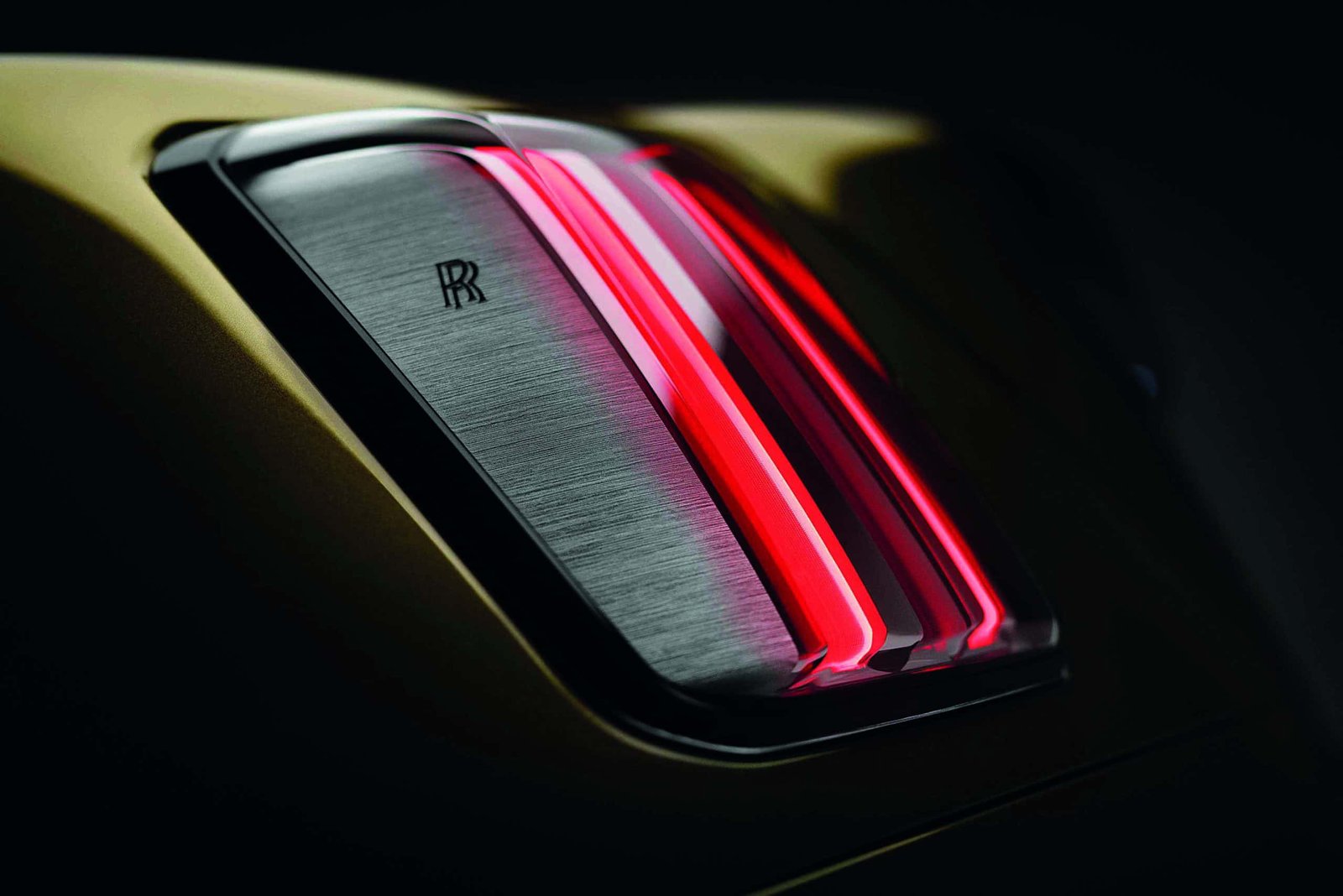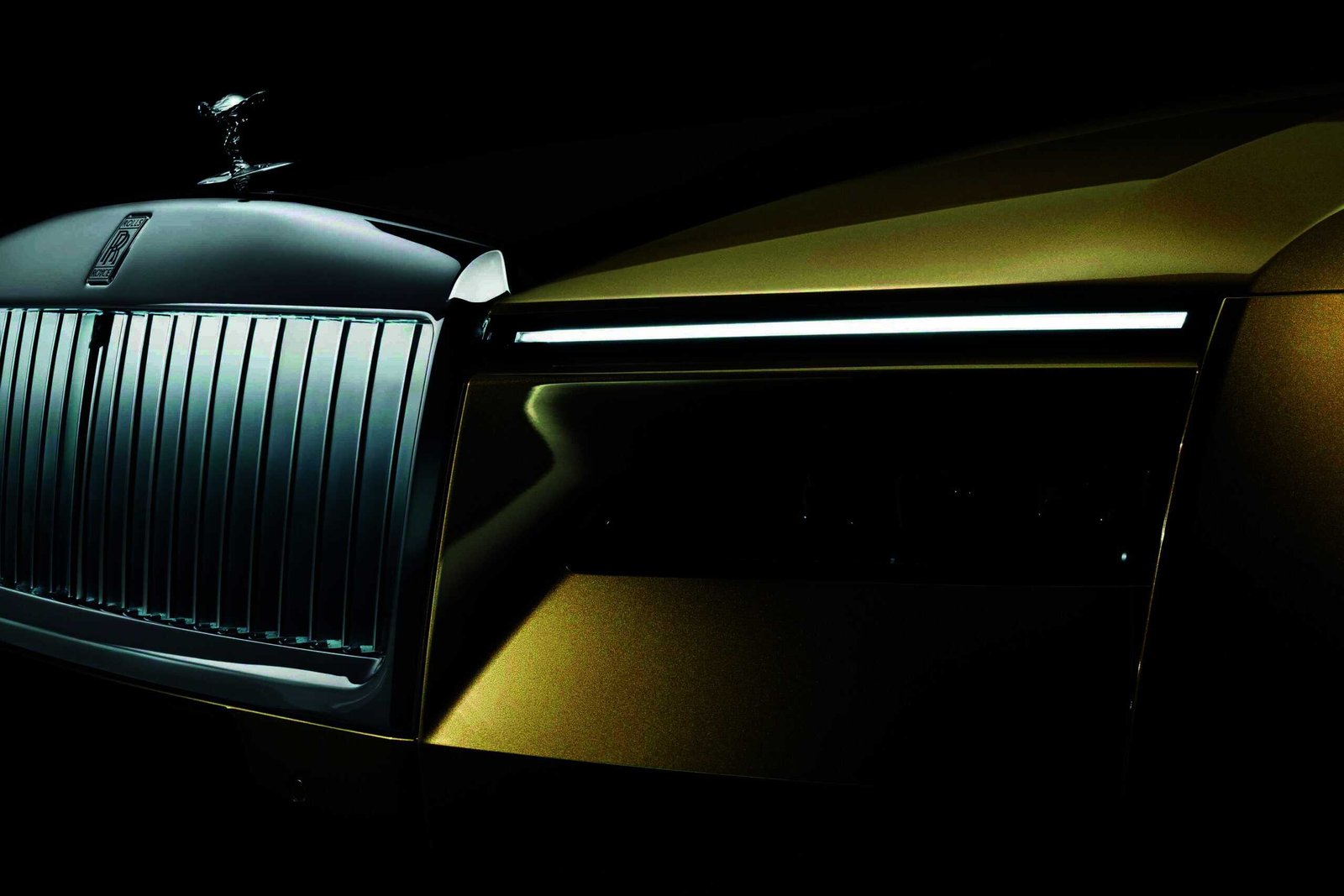Spectre specs
So, what’s it like to drive? Cruising around the vineyards of the Golden State, I was privileged to be among the first of a select group of motoring journalists to be allowed behind the wheel. To give us a sense of the lifestyle of Rolls-Royce’s Spectre clientele, we were based at the Four Seasons Napa Valley resort in Calistoga. But this wasn’t California dreaming.
Stretching to nearly 5.5 metres, the low-riding, battery-powered Spectre is truly, well, electrifying. It certainly has real road presence – first impressions are of a sweeping, aerodynamic, two-door four-seater fastback with a streamlined Spirit of Ecstasy at its prow. The famous hood ornament has been specially shaped and wind-tested over 830 hours to reduce its air resistance. You can even specify an illuminated version as an option.
Yet close up, you realise that the new model is surprisingly big for such a sleek-looking car thanks to its clever design. Inspired by modernist sculpture, nautical design and haute-couture fashion, it looks slimmer and lighter than it actually is.
The fun begins, however, the moment you open one of the two rear-hinged doors and step into the Spectre’s low-slung cabin. And at around 1.5 metres in length, these laser-welded aluminium doors are the largest pillarless coach doors ever fitted to a Rolls-Royce. Normally there is a button for the driver to press, so that the door closes automatically, but with Spectre you simply press your foot on the brake, and the door silently and elegantly swings shut.
The snug cockpit with its smart digital dashboard is sophisticated, simple, relaxing, restrained and sedate without the need for whizz-bang flashing lights or sci-fi styling to proclaim its electric car status. First and foremost, it is a Rolls-Royce. In the driving seat, Spectre feels cosseting, low and sporty. Yet there’s also a surprising amount of room for two passengers in the rear, thanks to the slightly reclined positioning of the seats, as I found to my own surprise and delight when being driven.
Switch on the ignition and there’s a calm, faintly perceptible tone as the motors spring into life – Rolls-Royce used the strains of a professional harpist to create just the right ambience. Driving Spectre is the easiest thing in the world – the car does most of the work for you leaving you to enjoy the experience. There’s no clutter of dials and buttons, and even the digital dials are designed with an analogue look and feel.
Spectre is sure-footed, nimble and amazingly responsive. Rolls-Royce always aims to produce its renowned “magic carpet ride” and with Spectre it has electrified the sensation. Acceleration is phenomenal, but also seamlessly smooth and controlled – you won’t feel your neck jerk back, despite its awesome power. One thing owners will need to take care about is watching their speed if they want to keep their licence. Exceptionally fast can seem rather relaxed.
It also feels remarkably intuitive and even the slightest touch on the tiller feeds instantaneously into the wheels. Spectre goes exactly where you are looking, as if you and the car are joined, and it is fun – you won’t get bored driving this car. Even after a long drive in this electric grand tourer, you’ll probably arrive feeling fresher than when you started.
If you want to increase the driving resistance – and generate some more charge – you simply press the “B” button on the column-shifter to activate brake mode. I liked this as you can reduce your reliance on the brakes and let Spectre take the strain with so-called single-pedal driving, which can even bring the car to a complete stop. But everything is seamless. Not at all forced or jerky. It all feels so natural and smooth. Spectre looks and drives just as you would expect a Roll-Royce to do. At no time did I think, “this is an electric car.” I didn’t need to make any compromises or allowances.
Charging the 102kWh battery to 80 per cent using a 195kW (DC) charger takes 34 minutes. A full charge on a less powerful 22kW (AC) charger takes 5 hours 30 minutes, so can be done while at home or in the office. Years ago, Rolls-Royce bosses were sufficiently concerned that their customers would not want to get their hands dirty charging up their own cars that they looked into remote induction charging over a pad. But the world has moved on and DIY charging is no longer a deal breaker.



